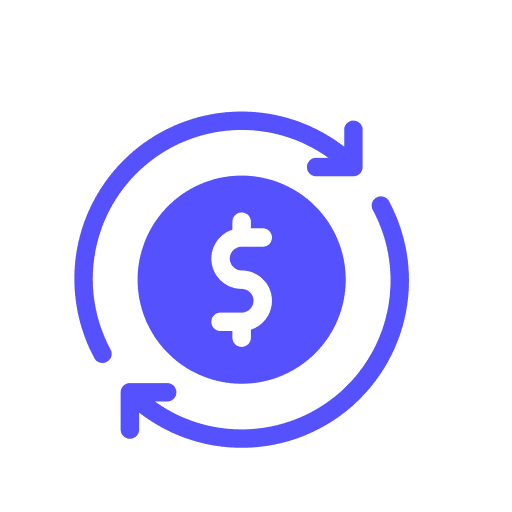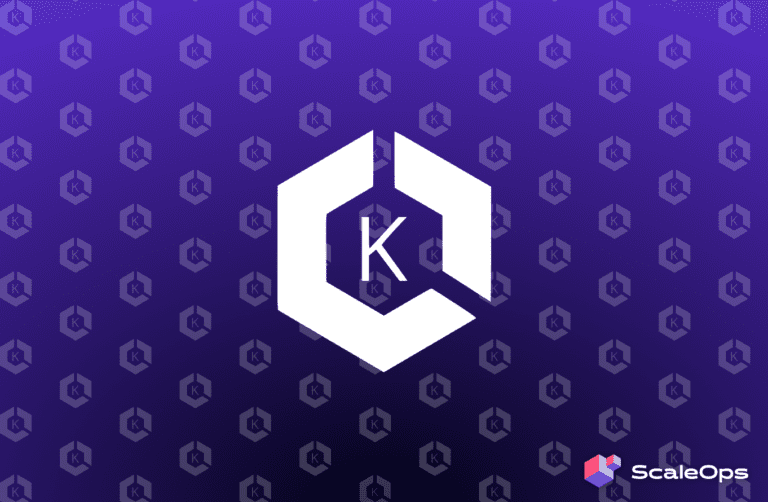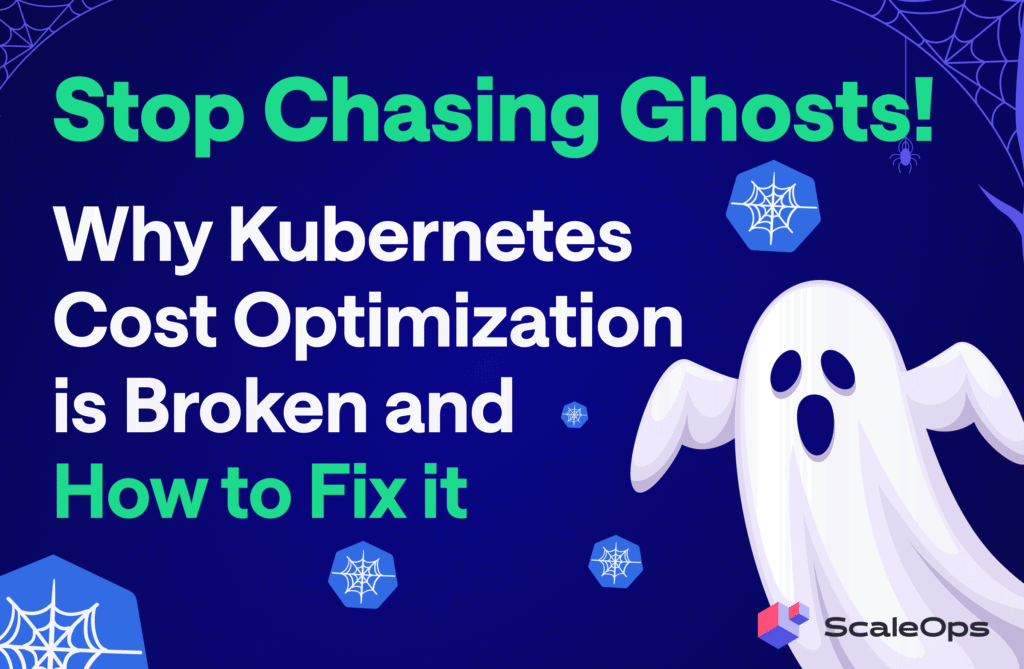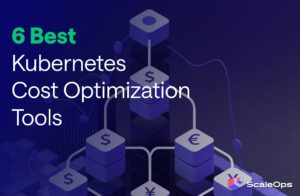At first, everything in your Kubernetes cluster seems fine. The workloads are running smoothly, and the infrastructure is stable. Then the bill arrives, and it’s way higher than expected. The initial reaction is confusion—how did this happen?
Cloud cost optimization is notoriously complex, and Kubernetes makes it even trickier. Resources scale automatically, workloads spin up dynamically, and ephemeral services leave behind lingering costs that no one notices—until the bill arrives. The first instinct is to integrate a dashboard for insights, but oftentimes by the time you do, the damage is already done.
This usually leads to a set of recommendations from a cost optimization tool: “Reduce CPU requests by 40%” or “Downsize this node pool.” It all sounds fairly straightforward—until you realize these recommendations are weeks old. The workloads have changed, traffic patterns have shifted, and implementing these “optimal” settings could now be catastrophic. Instead of optimizing costs, you’re chasing ghosts, trying to fix yesterday’s inefficiencies with outdated advice.
The only way to break this cycle is automation—not more reports, not more meetings, not more nudging and begging engineers to manually tweak resource requests. True cost optimization means eliminating the constant firefighting, offloading the burden from already overworked engineers, and relying on an automated system that intelligently and dynamically adjusts resources in real time, prevents waste before it happens, and reacts instantly to changes in workload demand.
Why Traditional Cost Optimization Tools Fail
While all this seems reasonable, why isn’t this norm and why are teams still struggling with optimizing Kubernetes costs? The Kubernetes ecosystem is filled with tools that promise to help teams reduce costs. They collect telemetry, analyze trends, and spit out recommendations.
But what do these tools actually do under the hood and why doesn’t this meet the demands of modern, complex K8s systems?
Typically, they follow a three-step process:
- Measure resource consumption over time—tracking CPU, memory, and node utilization.
- Compare actual usage against resource requests and limits—identifying where workloads are over-provisioned.
- Generate a list of recommendations—suggesting smaller instances, fewer nodes, or adjusted pod settings.
In theory, this approach should work, but in practice, it falls apart in dynamic production environments. Clusters are constantly changing. What was an optimal configuration yesterday could be an outage waiting to happen today.
DevOps teams are left with a growing list of stale recommendations, many of which require manual approval and implementation. Meanwhile, costs continue to rise, and the cycle repeats itself.
Where K8s Cost Optimization Breaks Down
Let’s step into the shoes of a DevOps engineer for a moment.
Here’s what a manual cost optimization process often looks like.
A cloud bill comes in higher than expected. Panic ensues.
Someone pulls up a dashboard, trying to pinpoint the biggest offenders, and a long list of over-provisioned workloads is created. Engineering teams are asked to “rightsize” their resources. Developers, focused on uptime and performance, push back voicing common frustrations like: “We need those resources for peak loads!” This often breaks down the discussion, and ultimately no changes are made. The cycle repeats when the next bill arrives.
This results in lost time, frazzled engineers, and no real cost savings.
Instead of recommendations that no one acts on, a proper system should make real-time adjustments based on actual demand––completely automated—without human intervention.
The False Promise of Node-Level Optimization & Practical Automation
It’s easy to say, “Just automate it.” In theory, automation should pretty obviously be the backbone of any Kubernetes cost optimization strategy. But in practice, many tools that promise automation still fall short.
So why is that?
Because automation isn’t just about turning dials—it’s about ensuring that workloads adjust dynamically without introducing risk or requiring endless manual oversight.
A naive approach to automation simply scales workloads up or down based on predefined rules. The problem is that real-world workloads don’t behave predictably. Traffic surges, batch jobs fluctuate, and cloud-native applications operate under strict availability constraints. This is where most cost optimization tools break down—they fail to account for pod-level inefficiencies, disruption budgets, and real-time workload changes. Many rely too heavily on node-level autoscaling, which is useful but does not fix the core issue of over-provisioned pods consuming more than they actually need.
Node autoscalers like Cluster Autoscaler and Karpenter can dynamically add or remove worker nodes and consolidate workloads onto fewer machines. However, they do nothing to optimize individual workloads. If applications request excessive CPU or memory, the autoscaler simply adds more nodes to meet demand, increasing cloud costs instead of reducing inefficiency at the source. This approach treats the symptoms rather than the cause, leading to ballooning costs without true optimization. And don’t get me started on unevictable workloads—stateful services, long-running processes, and workloads with strict placement constraints that defy traditional autoscaling logic and introduce a whole new set of challenges.
To be effective, automation must work continuously and contextually. It needs to monitor live demand in real time, adjust pod resources dynamically, and respect constraints like PDBs, Safe-to-Evict policies, and application scaling limits. A well-implemented system integrates with Kubernetes-native scaling solutions such as Cluster Autoscaler, Karpenter, and HPA, ensuring that optimizations don’t create instability.
The real cost savings happen at the pod level, where resource requests are dynamically adjusted based on actual consumption. This ensures workloads are running efficiently without over-allocating resources, ultimately reducing infrastructure costs before autoscalers are even triggered. By eliminating inefficiencies at their source, pod-level automation delivers sustainable cost savings without adding friction for engineers.
Unlike traditional tools that surface problems and expect DevOps teams to intervene, true automation removes the human bottleneck. It doesn’t just make recommendations—it acts, continuously refining resources in the background to ensure optimal performance and cost efficiency.
Stop Reacting, Start Optimizing: The Future of Kubernetes Cost Control
Kubernetes cost optimization isn’t just about identifying inefficiencies—it’s about acting on them in real time. Traditional cost optimization tools fall short because they rely on static recommendations that quickly become obsolete. True optimization requires continuous, automated adjustments at the pod level, ensuring resources align with actual demand.
But automation alone isn’t enough. Compliance requirements, organizational silos, and misaligned incentives often prevent teams from fully embracing cost-saving strategies. In our next post, we’ll dive into these blockers, examining how regulatory constraints shape cost optimization decisions, why developers and DevOps teams often work at cross-purposes, and how embedding automation into platform engineering can ensure cost efficiency without disrupting application performance.























